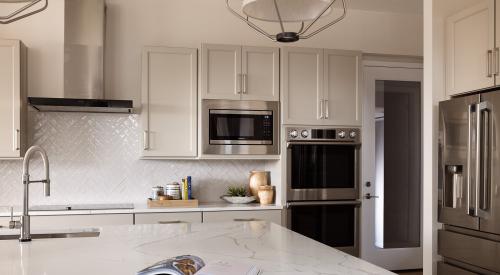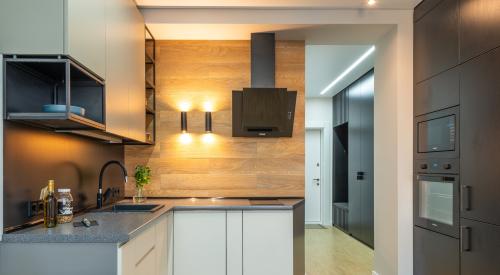Switching away from a gas stove can leave some people dubious. Fifty percent of buyers who said they were unlikely to buy an electric stove said it was because of previous poor performance with electric stoves.
So, how can builders explain the pitfalls of gas stoves while providing homeowners with a better solution? The answer: induction.
Guided by a EEBA Team Zero Webinar/Podcast presented by Ann Edminster, founder and principal of Design AVEnues LLC, and author of Energy Free: Homes for a Small Planet, here are some facts about the gas oven and its magnetic replacement.
GAS COOKING COMING UNDER FIRE
Going all-electric means eliminating all “natural” gas and propane-fired equipment in the home. The four primary uses are typically heating/cooling, water heating, cooking, and clothes drying.
An all-electric home leads to less indoor air pollution, fewer kitchen safety risks by cooking with gas, improved equipment efficiency, avoided gas price increases, and less greenhouse gas emissions. According to the Sacramento Municipal Utility District, a home that is all-electric emits 40% less greenhouse gas than an equivalent natural gas-fueled home.
In fact, many localities have even begun banning natural gas in new construction.
Panama Bartholomy, executive director of the Building Decarbonization Coalition, states that 47 California cities as well as Seattle, Denver, and New York City have made decisions that support localities that do not add natural gas connections in their projects.
Additionally, research by Dr. Brett Singer at Lawrence Berkeley Laboratory found that cooking with gas exposed people to unhealthily high levels of carbon monoxide, formaldehyde, and nitrogen dioxide.
This doesn’t bode well for gas stove-loving homeowners, and especially for remote workers.
On the flip side, residents of all-electric homes find increased indoor comfort and reduced overall energy use.
According to the webinar, research shows that after a significant power outage electric homes are able to restore power back faster than those that use gas—which can sometimes take weeks or even months to fully restore after a disaster or major event.
Induction cooking is the most viable replacement for those who love their gas ovens. An induction range/cooktop uses magnetic technology to heat, making it effortless to wipe up splashes and crumbs on the stovetop even as you’re cooking.
Many who have tried out induction cooking for the first time see much better heat control, and are perfectly fine cooking with it. Edminster acknowledges that although people who are used to cooking with gas enjoy it for its precise flame control, induction heating is a similar learned behavior that can be picked up in no time.
Because there are no open flames on the stove, and because of the induction’s magnetic technology, accidentally starting a fire while cooking is virtually impossible, according to Edminster.
Additionally, induction ranges are cooler—not just in style, but in temperature. Consumers don’t have to worry about their home getting hot as a result of cooking dinner. This can be a lifesaver for those who already live in hot areas, or experience severe heat waves during the summertime.
So with all the facts and figures in place, how do builders make the transition—from starting with the stove to an all-electric home?
MAKING A KICK-GAS TRANSITION PLAN
Edminster suggests planning ahead with your electric wish list items. New all-electric equipment, an electric vehicle, or even battery storage.
Then, reduce energy demand by replacing dated lighting and appliances. These are the easiest items to look into when it comes to improving energy efficiency in the home, according to Edminster.
Edminster recommends three good resources for looking into “best in class” electronics and appliances: the ENERGY STAR Most Efficient 2022 catalog, Consortium for Energy Efficiency, and the Enervee Choice Engine.
When a home ditches the gas stove and aims to go all-electric, the electric panel obviously comes to mind. It needs to be upgraded to ensure enough capacity, circuits, and outlets are available.
And in the end, consider installing solar onsite. Have a vendor estimate the size and cost of a solar/battery system that will meet your needs; you’ll even get a 26% federal tax credit for doing so.
If your biggest concern is convincing buyers’ that ditching gas isn’t the end of the world, there are many ways to inform both you and clients.
Are you ready to kick gas once and for all?
Ann Edminster has recently partnered with the Building Decarbonization Coalition to launch the “Switch Is On“ campaign, dedicated to reducing the use of gas-powered appliances in an effort to switch to all-electric. You can read more about her initiative here.















